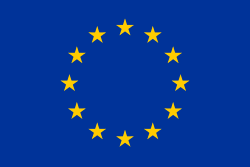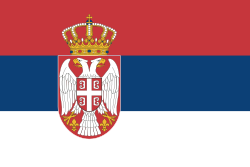Slovakisk
| Slovakisk (slovenčina, slovenský jazyk) | ||
|---|---|---|
| Talt i: | Slovakiet Slovakisk talende minoriteter: • USA • Canada • Tjekkiet • Ungarn • Serbien • Bulgarien | |
| Talere i alt: | 7 millioner | |
| Rang: | 106 | |
| Sprogstamme: | Indoeuropæisk Balto-Slavisk Slavisk Vestslavisk Tjekkisk-Slovakisk Slovakisk | |
| Skriftsystem: | Slovakisk variant af det latinske alfabet | |
| Officiel status | ||
| Officielt sprog i: | ||
| Reguleret af: | Det Slovakiske videnskabsakademi | |
| Sprogkoder | ||
| ISO 639-1: | sk | |
| ISO 639-2: | slo (B) slk (T) | |
| ISO 639-3: | slk | |
| Slovakisk sprogs udbredelse i 1910. | ||
Slovakisk (slovenčina) er et vestslavisk sprog som hovedsageligt tales i Slovakiet hvor det er det officielle sprog, men også i visse dele af Tjekkiet.
Tjekkisk er nært beslægtet med slovakisk, men de to sprog er efterhånden drevet længere og længere væk fra hinanden – specielt efter Tjekkoslovakiets opløsning.
Kilder
- ^ E.g. law 500/2004, 337/1992. Source: http://portal.gov.cz
Eksterne henvisninger
 Der findes også en Wikipedia på slovakisk.
Der findes også en Wikipedia på slovakisk.
| ||||||||||
| Spire Denne artikel om sprog eller litteratur er en spire som bør udbygges. Du er velkommen til at hjælpe Wikipedia ved at udvide den. |
|
Medier brugt på denne side
The Flag of Europe is the flag and emblem of the European Union (EU) and Council of Europe (CoE). It consists of a circle of 12 golden (yellow) stars on a blue background. It was created in 1955 by the CoE and adopted by the EU, then the European Communities, in the 1980s.
The CoE and EU are distinct in membership and nature. The CoE is a 47-member international organisation dealing with human rights and rule of law, while the EU is a quasi-federal union of 27 states focused on economic integration and political cooperation. Today, the flag is mostly associated with the latter.
It was the intention of the CoE that the flag should come to represent Europe as a whole, and since its adoption the membership of the CoE covers nearly the entire continent. This is why the EU adopted the same flag. The flag has been used to represent Europe in sporting events and as a pro-democracy banner outside the Union.Languages of Central Europe 1910.png A map of the linguistic situation in Central Europe around the year 1910. Based on a map by Dr. V. Schmidt and Dr. J. Metelka.HP1740-B (talk) 10:41, 13 April 2009 (UTC)






